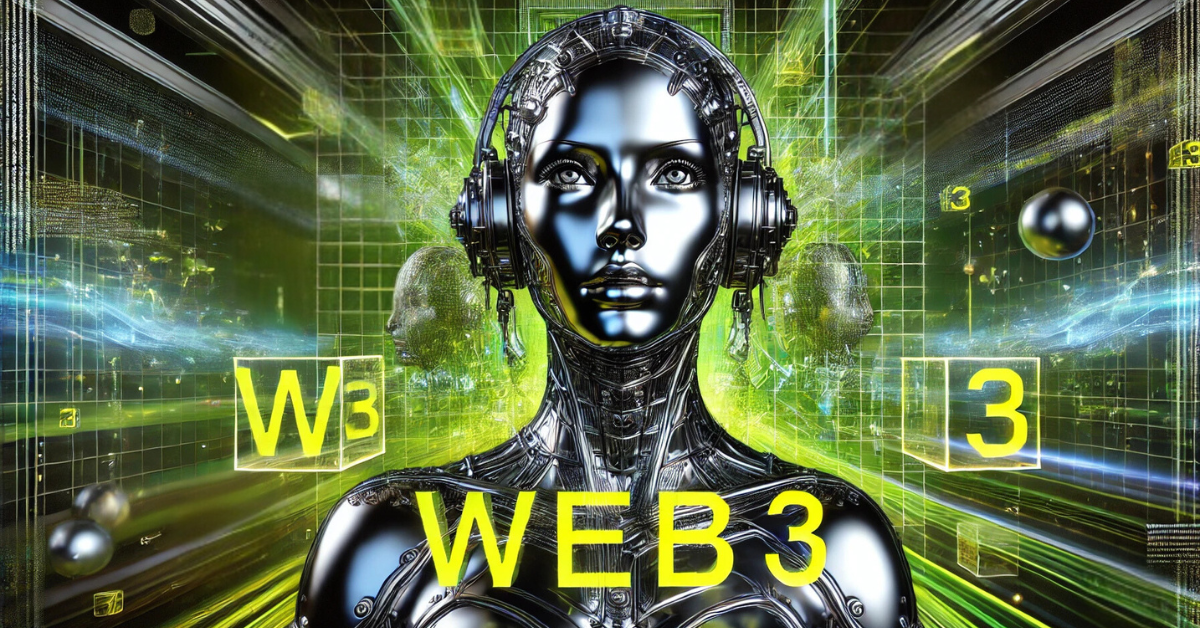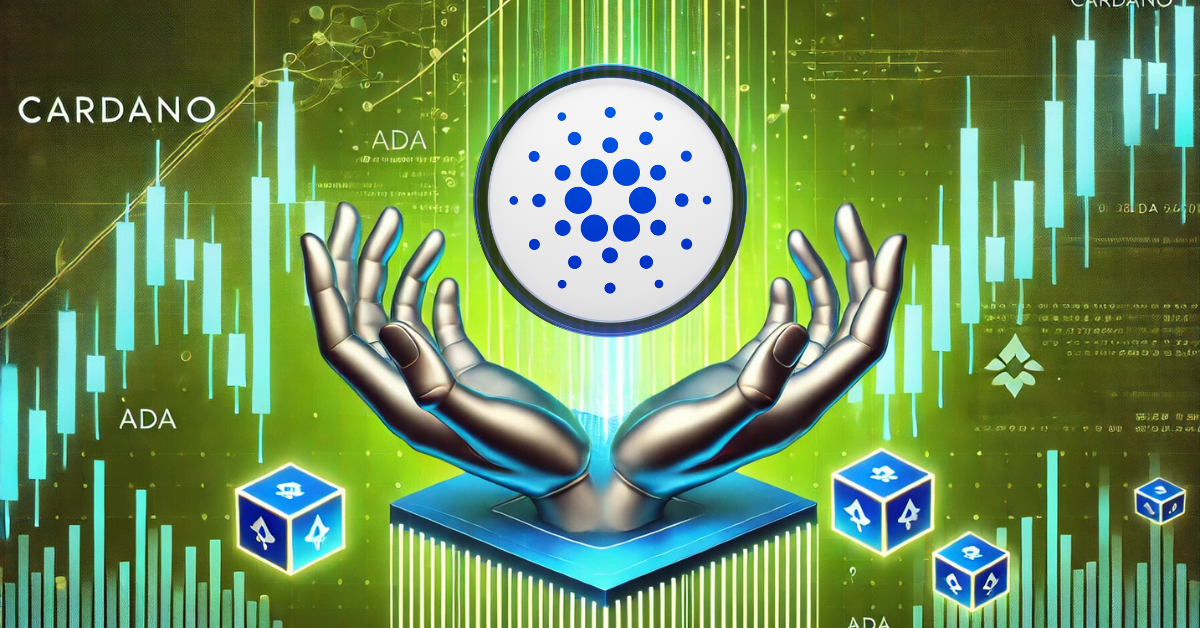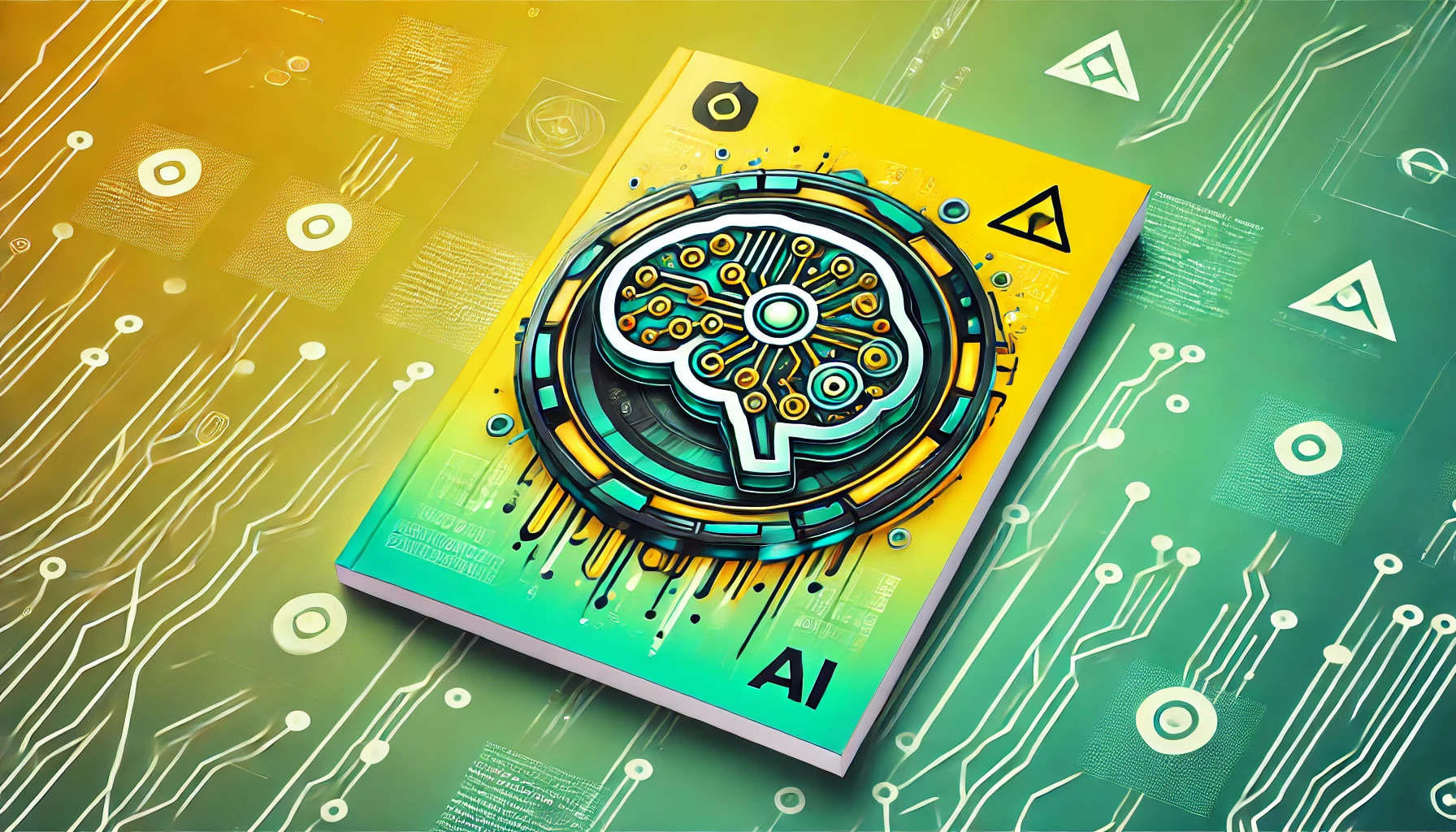Do you know what the future of the internet looks like? You should know that the internet is on the brink of a major evolution. There’s all this talk about digital privacy, cryptocurrencies and decentralized applications which suggest that something big is going to happen.
This new phase of the internet is called Web3. But what exactly is this Web3 and what will happen to our existing search engines? Stay tuned and you’ll know.
The Web3 market size is predicted to reach $5.5 billion by 2030.
Web3 is all about giving power back to the users. In the current internet, most of the data and content is handled by big companies. But it’s different for Web3 which decentralizes everything. This means no single entity has control over your information or how you interact online.
Imagine a world where your personal data isn’t stored in big servers but is under your control. You could decide who gets to see your information and even earn rewards for sharing it. This is actually phenomenal.
Now, let’s dig into the topic head on.
What is Web3?
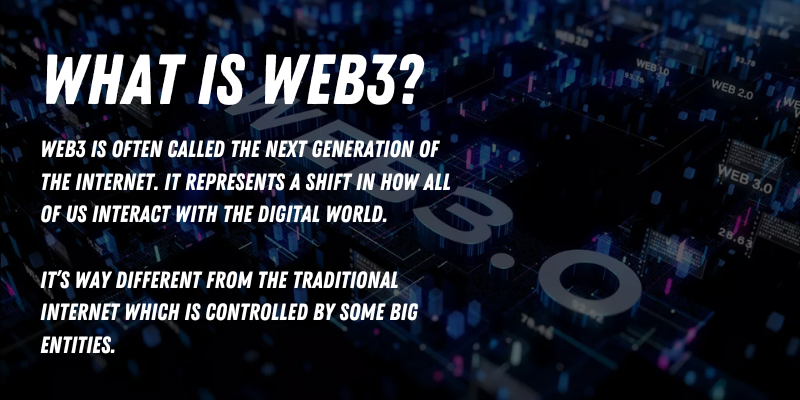
Web3 is often called the next generation of the internet. It represents a shift in how all of us interact with the digital world. It’s way different from the traditional internet which is controlled by some big entities. Web3 creates its own decentralized internet so that the people can have control over their information.
Now that you know Web3 meaning, you should also know what decentralized means exactly. In Web3 the data is spread across multiple nodes and not in storages owned by tech giants. All this is done using blockchain technology. Yes, this is the same technology that is behind cryptocurrencies such as Bitcoin and Ethereum. Blockchain is like a digital ledger that stores data in multiple devices so no one can manipulate it.
With Web3 you can have more control over your online activities and data. For instance instead of logging into different websites using a password stored on a company’s server, you could use a digital wallet. This wallet will help you log in to every website and also manage your digital identity and assets in a secure space. This way you remain in control of your data and how it is used and that too without needing to rely on a central authority.
If you didn’t know about Web3, you’re one of the 69% who said they didn’t know it was in a Harvard Business Review poll in 2022.
What are Web1 and Web2?
Now that there’s a Web3, it means that there should be Web1 and Web2 before it as well. Web1 was the earliest version of the internet which was introduced in the 1990s and kept working until the early 2000s. At that time it was labeled as “open protocols” which meant that it can be used by anyone to share information and there was no big company holding anybody’s information.
At that time there wasn’t much to do so people would just read some static pages or chat with someone in the most simple and plain way. This internet became extremely popular after which companies started to leverage it for online shopping, academic purposes and scientific research.
After that in the mid-2000s the Web2 was introduced which we use currently. It offered a more interactive and user-driven web experience. This was the era when companies like Facebook, Twitter, and Wikipedia started to become popular. These sites allowed users to share content and interact with other people.
At first sights these platforms seemed harmless and free-to-use. However these companies had another way to generate revenue and that was to sell user behavior information to advertisers. This also meant that the company has full authority over the user experience and what they do with the data they have gathered.
Web2 vs. Web3 – Main Differences
The table below shows how Web3 is better than the current version and why we should switch all our online activities there.
|
Features |
Web2 |
Web3 |
|---|---|---|
|
Control |
Controlled by centralized companies like Google, Facebook, and Amazon |
Decentralized, controlled by the community and powered by blockchain |
|
Data Ownership |
User data is owned and controlled by platforms |
Users own and control their own data |
|
Monetization |
Platforms monetize through ads and user data |
Users can earn and transact directly through cryptocurrencies |
|
Content Creation |
User-generated content is owned by platforms |
Content and assets can be tokenized and owned by users |
|
Security |
Data stored on centralized servers, vulnerable to hacks and breaches |
Data stored on decentralized networks, making it more secure |
|
Identity |
Single sign-on via platforms (Google, Facebook, etc.) |
Users manage their own digital identities through wallets |
|
Transparency |
Proprietary algorithms and data handling |
Transparent, with open-source smart contracts and protocols |
|
Interoperability |
Limited to platform-specific ecosystems |
Enhanced interoperability across platforms and applications through blockchain |
|
Payment Systems |
Rely on traditional banking and payment gateways |
Uses cryptocurrencies and decentralized finance (DeFi) solutions |
|
Censorship |
Content can be moderated or censored by platforms |
Resistant to censorship due to decentralized governance |
|
User Participation |
Users have limited influence over platform policies |
Users have voting rights and can influence protocol changes |
Which Technologies Support Web3?
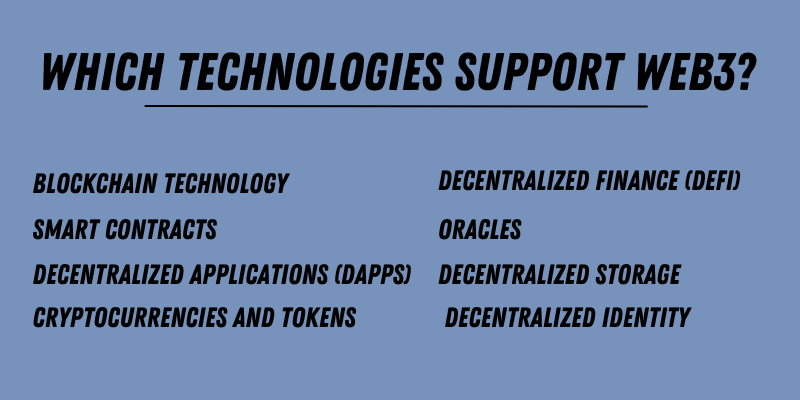
Web3 is not something that exists on its own. There are multiple technologies that help maintain the Web3 ecosystem. These include:
Blockchain Technology
The main technology that becomes the foundation for the Web3 ecosystem is Blockchain. As you know a blockchain is a digital ledger that records transactions across multiple nodes so that they are transparent and secure. This technology is also used by cryptocurrencies which are also an essential part of the Web3 infrastructure.
Smart Contracts
These are self-executing contracts with the terms of the agreement directly written into code. These contracts automatically enforce rules and agreements which is why there’s no need for any intermediaries. This technology allows users to have trustless interactions and transactions which are important for dApps.
Decentralized Applications (dApps)
These apps run on the blockchain network rather than a centralized server. They use smart contracts to work properly and offer multiple services ranging from financial transactions to social networking. These decentralized apps are an important part of any decentralized ecosystem to provide as they are transparent and resistant to censorship.
Cryptocurrencies and Tokens
Now to handle the entire financial infrastructure, Web3 needs cryptocurrencies like Bitcoin and Ethereum. These enable peer-to-peer transactions in the Web3 ecosystem. Additionally these tokens are digital assets that represent ownership, access rights and utility within a dApp. These tokens are also used for voting, staking and other rewarding services. This shows how valuable cryptocurrencies are for the Web3 space.
Decentralized Finance (DeFi)
DeFi is basically a collection of financial services that are built on the blockchain technology. It allows users to borrow, lend, trade and earn interest without needing any traditional banks and or financial institutions. These DeFi platforms also use smart contracts to automate multiple processes and make them more transparent and accessible.
Oracles
Simply put, Oracles are services that provide external data to blockchain networks so that smart contracts can easily interact with real-world information. It’s an essential component for Web3 applications that require off-chain data to work properly. This information includes weather conditions for insurance contracts, stock prices for financial applications and more.
Decentralized Storage
The Web3 ecosystem has not left even a single stone unturned. It has even covered the storage issue with IPFS (InterPlanetary File System) and Filecoin. Both of these provide an alternative cloud storage facility in place of the traditional storage services.
These systems store data across a distributed network which makes it even more secure and less prone to censorship. It also ensures that users have control over their data which is the basis of Web3.
Decentralized Identity
The only thing that was left in this list was the identity of the person. With Web3 the users can control their digital identities by using decentralized identifiers (DIDs) and blockchain-based identity solutions. Now you don’t have to rely on third-party services like Google and Facebook to remember and manage your identity. Just do it yourself in a decentralized manner.
Advantages of Web3 Technology

Here are all of the advantages that Web3 offers to you and everyone else.
Decentralization
This is the most important aspect of Web3. It’s the main idea on which the entire ecosystem is built. As you know, currently a few large companies like Google handle most of the user data in a centralized storage area and use it however they want.
However Web3 shifts this power dynamic by using blockchain technology and decentralizing everything. There will be no single entity and everyone will handle their own data.
Data Ownership and Privacy
In Web3 users have much greater control over their data which is opposite to what Web2 stands for right now. These tech giants often monetize our personal data without consent to generate revenue.
But with Web3 nothing like this will be possible. This means enhanced privacy and less risks of data breaches and unauthorized access.
Enhanced Security
Security is another fundamental characteristic of Web3 technology. It leverages the cryptographic security methods offered by blockchain technology to secure transactions and data.
The decentralized nature of blockchain makes it resistant to hacking and fraud which is why you can rest assured that your funds and identity are not going anywhere. Even if someone tries to, they’ll need an enormous amount of computational power which isn’t readily available.
Transparency and Trust
One of the Web3 agendas include transparency. By using its open-source technology and smart contacts Web3 will become completely transparent. As you know smart contracts are simply code that run on the blockchain which is why they remain transparent so anyone can verify them. This builds trust between the user and the platform.
User Empowerment and Autonomy
Web3 empowers users by giving them direct control over their online interactions. By using dApps the users can easily interact and engage in peer-to-peer transactions. They can also share content and participate in online communities. The best part about this is there is no one to watch what you’re doing so you can interact with anyone freely and fairly.
Monetization Opportunities
Web3 is opening up new doors for users to monetize their content which was not possible in the Web2 space. You can use cryptocurrencies and other tokens to participate in decentralized networks. It can be done by providing services, sharing content or even by just using it as a platform. These tokens can then be used for trading or staking which creates a more inclusive and rewarding economic system.
Interoperability
If a platform is not able to interact with another platform then the ecosystem will cease to exist. Which is why interoperability is one of the key features of Web3 space. This is entirely different from the approach used by Web2 companies that operate independently. This interoperability in Web3 enhances user experience and provides other benefits too.
Reduced Censorship
Web3’s decentralized nature makes it more resistant to censorship. Since there’s no single entity that is controlling the entire network, it becomes much harder to censor content or restrict access to certain information.
This is actually beneficial for protecting freedom of speech and to ensure that every user can access different perspectives and information without any fear of being charged or suspended.
Innovation and Creativity
Because of Web3, developers can build and deploy dApps without requiring any permissions or going through any gatekeepers like app stores. Plus there’s no approval process which lowers the barrier of entry and developers can innovate however they want. This provides an opportunity to grow and contribute to the Web3 space.
Sustainability
Lastly Web3 is focused on building more sustainable and energy-efficient systems. There’s been continuous development to reduce the environmental impact of blockchain technologies. This is being done with the help of innovations like proof-of-stake (PoS) consensus mechanisms replacing the energy-intensive proof-of-work (PoW) models.
Disadvantages of Web3 Technology
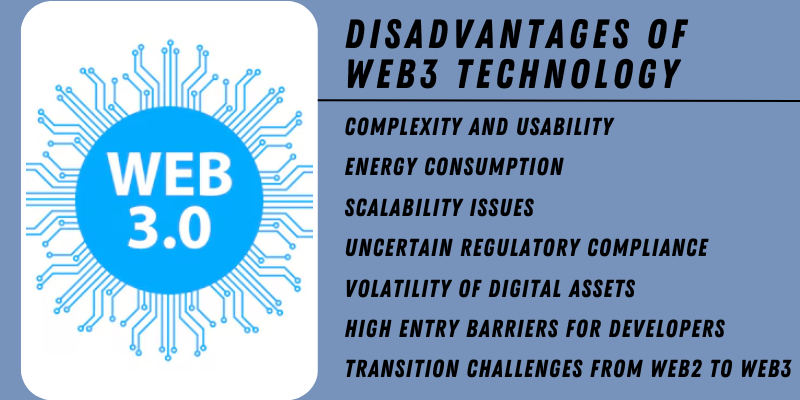
You might wonder how such an exceptional technology has any drawbacks. But that’s the harsh reality that anything that has benefits, also has a long list of disadvantages. Some of these for Web3 include:
Complexity and Usability
Web3 technologies are still relatively new and complex which makes it difficult for an average user to understand it. You need a certain level of technical knowledge if you want to explore the Web3 space with ease. It includes managing private keys, using digital wallets and understanding what cryptocurrencies are.
Energy Consumption
Many blockchain networks require enormous amounts of energy to work properly, especially the ones that use proof-of-work (PoW) consensus mechanisms. For instance Bitcoin has been criticized for years for its high energy consumption.
This is a major environmental concern and can have global impacts if not resolved quickly. Blockchain networks can reduce this impact by using a proof-of-stake (PoS) mechanism that is highly energy-efficient.
Scalability Issues
It is one of the biggest disadvantages of Web3 technology. Blockchain networks which are the backbone of this system often struggle with processing a large number of transactions quickly.
In this, centralized networks are way ahead as they can handle a large number of requests extremely quickly and efficiently. This can become a significant barrier during mass adoption.
Uncertain Regulatory Compliance
Web3 operates in a largely unregulated area which leads to legal and regulatory uncertainties. Governments around the world are still trying to figure out how to regulate blockchain technologies, cryptocurrencies and decentralized finance (DeFi) platforms. Because of this it can be risky for individuals and companies to start investing in the Web3 space. It can also cause companies to not consider it at all.
Volatility of Digital Assets
Cryptocurrency and tokens that are part of this ecosystem are highly volatile digital assets. Their values can fluctuate dramatically within short periods, making them a risky medium for transactions and a volatile store of value. Because of this the users might get discouraged and stop being involved in the technologies related to Web3.
High Entry Barriers for Developers
As a developer if you want to build apps in the Web3 space, you need specialized knowledge and skills. This creates a high entry barrier for developers who are not familiar with these technologies. Additionally, the development tools and resources available for Web3 are not as mature or user-friendly as those for traditional web development. This can eventually slow down innovation and the adoption of new ideas.
Transition Challenges from Web2 to Web3
Lastly, it’s not easy to transition from Web2 to Web3 all of a sudden. It requires significant changes in how websites and applications are built, hosted, and maintained. Businesses must invest in new infrastructure, learn new technologies, and possibly restructure their entire operational models if they want it to work properly. The companies who are heavily invested in Web2 technologies might also become hesitant to shift towards a new era of internet.
When Will Web 3.0 Be Released?
Web3 is not something that can be released all at once. Many parts of this technology are already in use such as blockchain and decentralized applications. However just like it took a decade to transition from Web1 to Web2, transitioning to Web3 might take a lot more. Some trends of Web3 are already becoming visible for people who know where to look.
For instance, businesses are already using tokenization. It’s basically now digital assets are represented on the blockchain. It was predicted that in 2024 almost a quarter of all the businesses will start using decentralized applications but will still work under centralized platforms. Some examples include:
- Meta – Beginning to offer user-created content in the metaverse.
- Starbucks and NBA – By offering NFTs to users and fans.
However, even with all this information it is impossible to predict when Web3 will be fully operational and replace the current Web version. Some people thought it would already be here but the technologies are still developing and becoming more practical. Most experts think Web 3.0 is still at least ten to fifteen years away.
Conclusion – How To Get Prepared for Web3?
Web3 is not just a word now as it’s progressing rather quickly now. In no time it will start to change the way we interact with the internet. However it won’t be accessible to everyone much like cryptocurrencies, mostly because of regulatory issues in different regions. But only time will tell how Web3 will shape the future of the internet.
Now the main question here is how you can prepare yourself before it becomes mainstream. For that start by educating yourself about the technologies behind it and how they work. For instance, learn about blockchain technology and smart contracts. It will give you a solid foundation on the basis of which you’ll be able to easily navigate the Web3 space.
Lastly, you should know that Web3 is here to stay and will definitely complete its goal of making the internet more user-centric and decentralized. It offers multiple benefits but there are some drawbacks as well that it needs to overcome. With that said, it’s better to prepare for it rather than being left behind when it becomes mainstream.
FAQs
Is my data safe on Web3 platforms?
Web3 platforms prioritize data security by using decentralized networks and encryption. However, always use secure wallets, double-check dApps for security reviews, and avoid sharing your private keys to maintain data safety.
Are there any fees associated with using Web3?
Yes, transactions on Web3 networks require fees, known as “gas fees,” to compensate for the computational power used by blockchain nodes. Fees vary based on network congestion and the type of transaction.
What are smart contracts, and how do they work?
Smart contracts are self-executing agreements coded directly into the blockchain. They automatically enforce terms and conditions, enabling trustless transactions. Once conditions are met, the contract executes itself without needing a third party.
Can I use Web3 without owning any cryptocurrency?
Generally, Web3 applications require cryptocurrency for transactions. However, some dApps offer limited functionality without crypto. To fully utilize Web3, owning some cryptocurrency is usually necessary.
Can I use Web3 applications on my smartphone?
Yes, many Web3 applications are accessible on smartphones through mobile wallets like MetaMask or Trust Wallet, which support dApp browsers. Ensure your mobile wallet is compatible with the dApp you want to use.
